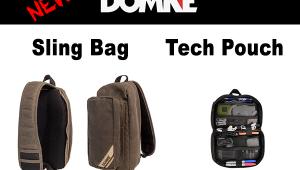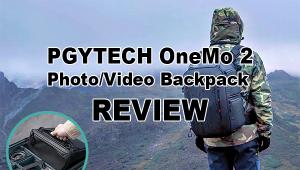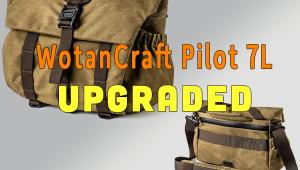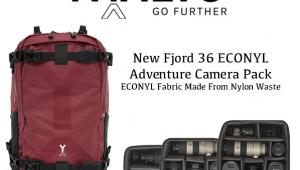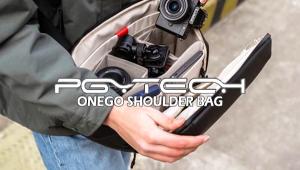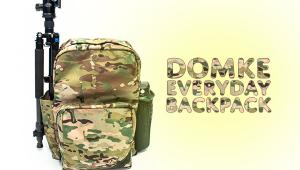Roller Camera Cases: Mobility And Utility Combined; A Back-Friendly Way To Carry Photo Gear
Sometimes you need something other than a backpack or shoulder bag for your camera gear, and that leads us to the rolling camera case. When choosing a wheeled case, begin with the same criteria you’d use for any camera bag: functionality. You want the bag to protect your gear, but the padded outer shell should be a bit more sturdy and protective to hold up to day-to-day encounters on the street. And you still need the interior to be easily modified and further protective against shock and vibration. Some rollers add small pouches for accessories. And, with notable exceptions, wheeled cases offer numerous pockets inside and out so that they are self-contained working platforms. You may also want the case to carry a tripod, but that’s a double-edged sword, since a tripod may garner unwanted attention. And you may want to use the bag as a weekend roller sans insert—a possibility with select cases.
|
Tenba Roadies Universal Rolling Photo/Laptop Case
(www.tenba.com) |
||
 |
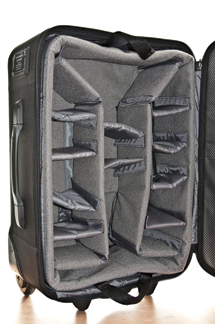 |
|
|
||
When traveling by air, you also need to ensure the case will ride in the cabin, in the overhead bin. Unfortunately criteria vary between domestic (H+W+D=45”) and more stringent international airlines (42”)—check in advance. Not to mention, you have to allow for even tighter restrictions on smaller aircraft, such as commuter jets and puddle jumpers. So, one roller case may not fit all needs.
|
Crumpler Cork & Fork
(www.crumplerbags.com) |
||
 |
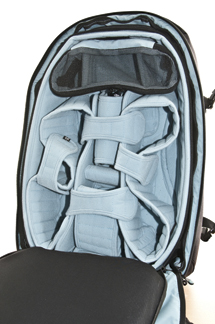 |
|
|
||
I worked with the following cases: Crumpler Cork & Fork, Delsey ODC 61, Kata OC-84, Lowepro Pro Roller x200, M-ROCK McKinley 526, Naneu UrbanGear U220 (new version), Pelican PCS182 Rolling Backpack, Rimowa Tropicana Trolley, Seahorse Hurricane SE-920, Storm Case iM2620, Tamrac Rolling StrongBox-LP4, Tenba Roadies Universal Rolling Photo/Laptop Case, Think Tank Photo Airport International V2.0, and Vanguard Kenline i-Pro 56. And I tried to make choices based on a common-sense approach, but understandably what works for some does not work for all. Before you get rolling, you first need to choose between a hard-sided and soft-sided case.
|
Kata OC-84
(www.bogenimaging.us) |
||
 |
 |
|
|
||
Hard Or Soft?
Soft-sided luggage preferably comes in a ballistic nylon outer shell, although other nylon, polyester, and leather are viable options. This bag gives you many choices in what you carry and how you carry it, with some doubling as a backpack (M-ROCK, Naneu, Pelican, and Vanguard). Others carry a removable daypack (Crumpler and Lowepro), or, instead of that, a removable tray insert that you work out of (Delsey, Naneu, Pelican, Tenba, and Vanguard). Zippers are the primary form of closure (with maybe buckles), often with some provision for an added (if optional) lock as well. Think Tank Photo and Lowepro get creds for outfitting the case with a TSA-approved combination lock (two in the Think Tank; and each case includes a tether so you can safely leave the locked bag in a hotel room). Hopefully, other manufacturers will follow suit.
|
Pelican PCS182 Rolling Backpack
(www.bkaphoto.com) |
||
 |
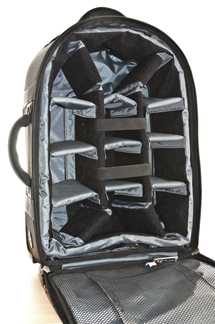 |
|
|
||
Offering the best possible protection, hard-sided cases are constructed of metal or space-age molded resin or composite plastic. Thanks to O-rings or other sealants, the case is impervious to the elements. These cases give you a choice between the more typical dividers (as found in soft bags—quick and easy for the most part) and foam (preferably plucked, so it doesn’t have to be cut). Foam offers the ultimate protection, but requires new foam sets for each new configuration. Of the hard cases reviewed, the metal Rimowa features key locks in the latches, whereas the molded Storm and Seahorse cases use a locking mechanism integrated into the latches (to prevent accidental opening), with provision for optional padlocks for security. Molded cases also employ an automatic purge valve to adjust air pressure and prevent water from getting in when submerged (automatic meaning no user involvement). However, they are rarely airline-friendly.
|
Delsey ODC 61
(www.delseycamerabags.com) |
||
 |
 |
|
|
||
A Smooth, Quiet Ride
I should point out that I took a practical approach when testing these 14 cases, schlepping them up and down two flights of stairs and wheeling them around over various surfaces, including grass—and for the most part they were satisfactory. I was looking for a smooth, quiet ride and found that to be true with in-line, ball bearing-style wheels. Also, you need to be watchful of the “undercarriage,” for want of a better term—the area closest to the ground when rolled. Stray debris may get caught in tow when the bag rides too low. By the way, four-wheeled “spinners” have not yet reached the photo marketplace, but I don’t see a practical advantage to that design, except maybe over smooth air terminal floors.
|
Lowepro Pro Roller x200
(www.lowepro.com) |
||
 |
 |
|
|
||
Getting A Handle On Things
The trolley handle is another key feature. Unlike a tripod, the number of sections on this telescoping handle is of no practical concern. More important, trolley height is usually adjustable in stages (handy for persons of shorter stature), but doesn’t always lock in position at interim levels. Also noteworthy is the supporting shaft.
|
M-ROCK McKinley 526
(www.m-rock.com) |
||
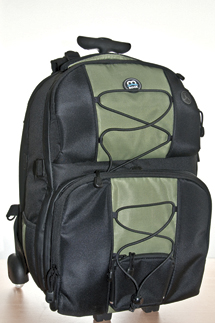 |
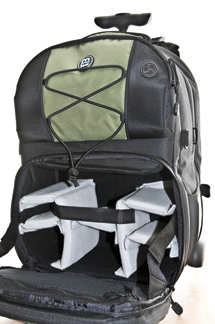 |
|
|
||



